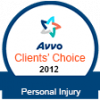Snoqualmie Pass is a major traffic route over the Cascade Mountains in Washington State and carries Interstate 90 connecting eastern and western Washington. The pass is open year-round with a few closures during storms, heavy snow or accidents. According to the Washington State DOT, around 30,000 vehicles travel over the 3,000 ft. elevation pass each day.
The pass is also the primary shipping lane for commercial trucks as it is the only divided highway that runs across the state. At the summit there are two ski resorts offering over 2,000 square acres of skiing, snowboarding and tubing that attracts over 500,000 people each winter season. Adding to this are the seemingly never-ending construction projects that are operating hoping to make the pass safer and less congested.
All of this puts a large number of vehicles navigating the pass each year, and when you add the dangerous road conditions, the incline and perpetual construction, it creates the perfect storm for vehicle accidents.
How Bad is It?
On a 50-mile stretch of I-90 that covers the pass, there are an average of 155 collisions involving serious injury and 4-6 fatalities each year. In 2016, these numbers spiked with 12 fatalities and around 190 serious collisions. Those numbers were better in 2017, but are still trending up over the past decade.
Most of these crashes are concentrated during the winter months primarily due to the road conditions and the increased use of the recreational parks. During this time, traversing the pass can be treacherous. When there is compacted snow or ice, the Washington DOT will require each car to have approved traction devices which can be studded snow tires, chains or cable/composite chains.
There are signs posted indicating when the chains are required, and there are turn-outs available for people to chain-up. If a driver is caught without proper traction, he or she can receive a $500 fine and/or be prevented from going over the pass.
Accidents
A disproportionate amount of collision are multi-vehicle pile-up crashes that are caused by the inability to stop due to the incline (in some spots) and road conditions. There is also a significant number of accidents involving semi-trucks that transport goods across the state.
For example, on January 4, 2019, there were dozens of collisions on I-90 on or near the pass with one involving four semi’s and a sedan on the eastbound lanes that left one dead and others injured. Within a mile in the westbound lanes near the same time, there were six accidents involving three semi’s and three cars. In these there were multiple injured motorists but no fatalities.
Washington State Patrol closed a 70-mile section of the freeway, from North Bend (west side of the pass) to Ellensburg (east side) and it remained closed for 13 hours while emergency vehicles, crash investigators and tow trucks worked the scene.
Trooper John Bryant attributed the crashes to poor traction caused by snow, ice and freezing rain. “You get toward morning when you get your lowest temperatures of the night,” Bryant said. “Sometimes an area of a roadway, you’ll get that glazing of ice and just a little bit will cause problems.”
During the day, temperatures were in the mid thirties and then dropped below freezing just before the accidents occurred.
Dangerous driving conditions over the pass isn’t limited to Winter as a pregnant woman was tragically killed in April of 2018 when slick road conditions brought on by a spring storm caused a vehicle to lose control and smash through a guardrail and down an embankment.
Types of Injuries
Many of the injuries come from high-impact and rollover collisions which bring about certain types of injuries:
- Head Trauma
- Broken Bones
- Upper torso Injuries (seatbelt and airbags)
- Neck and soft-tissue
- Fatalities
What to do if You are in an Accident on Snoqualmie Pass
The first thing is the safety of you and those in your vehicle. After the impact, usually the best thing to do is to stay in your car with the seatbelt on. According to the American Automobile Association, when a car collides with another on a busy highway or freeway, the risk is great for secondary collisions as others have difficulty topping.
This is especially true on Snoqualmie Pass as road conditions and the incline sometimes make it difficult to stop in time. If you are outside your vehicle, there is no protection from the impact of another car. If a secondary crash comes, then being seat belted in your vehicle is your best chance to survive. Of course, in the case of a vehicle fire or the risk of the car falling off a cliff or embankment it is better to exit the vehicle. This decision is up to the driver to use common sense. Otherwise, stay in the vehicle until told by the authorities to do otherwise.
After that, get medical attention and call us.
Do I need an Attorney?
If you are involved in an accident on Snoqualmie pass, of any stretch of I-90, because of someone else’s negligence, then you need to talk to an attorney who can evaluate your case and advise you on the law. The attorneys at Crary, Clark, Domanico, & Chuang, P.S., have offices in Spokane, Washington and serve clients everywhere in the State of Washington and Idaho as well. We have the experience and knowledge of the law that is needed to help those who need compensation for their injuries. Contact us today for a free consultation at (509) 926 4900, or send a message.








